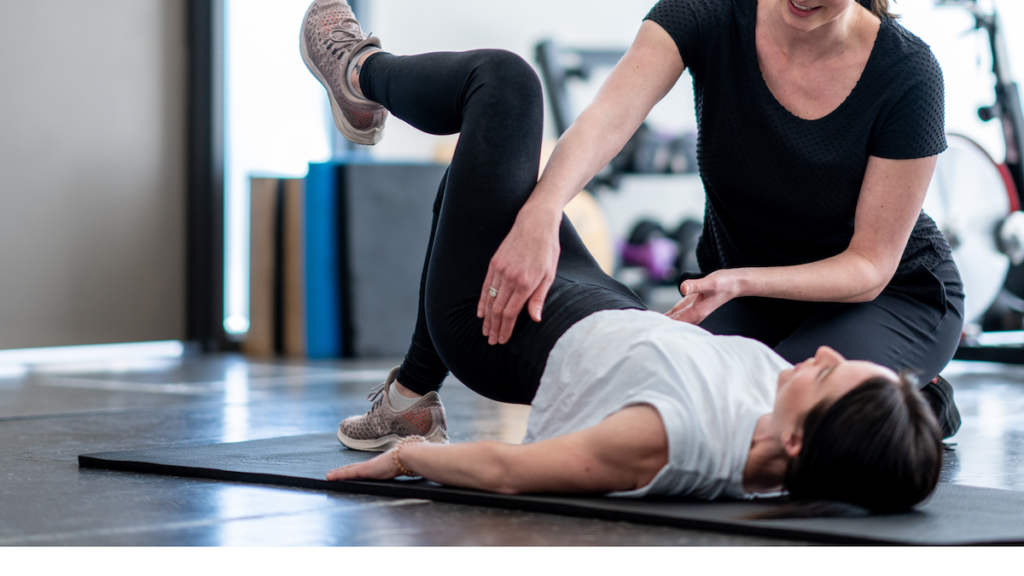The pelvic floor is getting more recognition, and rightfully so. According to a recent article in The New York Times, nearly one in three women suffers from a pelvic floor disorder, most commonly urinary or bowel incontinence, pain or prolapse. The article goes on to offer a series of helpful exercises that coordinate breathing and movement, which may help mitigate pelvic floor problems— including incontinence.
What Are Pelvic Floor Exercises?
Pelvic floor exercises, often known as Kegel exercises, are a fundamental component of strengthening the core and addressing issues related to pelvic floor dysfunction, including incontinence. While the exercises target specific muscles within the pelvic region, their impact extends beyond the pelvic floor, engaging the entire body in a coordinated effort to enhance strength, stability, and overall wellness.
The pelvic floor is a group of muscles and connective tissues that form a supportive hammock-like structure at the base of the pelvis, providing necessary support for the bladder, uterus, and rectum. Weakness or dysfunction in these muscles can lead to various problems, including urinary and fecal incontinence, pelvic organ prolapse, and sexual dysfunction. Pelvic floor exercises aim to strengthen and tone these muscles, improving their ability to provide support and control.
At first glance, pelvic floor exercises may appear to focus solely on the muscles of the pelvic region. However, a deeper understanding reveals their integration with the broader musculoskeletal system and their reliance on coordination and stability throughout the body. Here’s how pelvic floor exercises engage the whole body to strengthen the core and reduce incontinence:
Core Engagement
The pelvic floor muscles are an integral part of the core, which encompasses the muscles of the abdomen, lower back, and pelvis. Pelvic floor exercises involve contracting and relaxing these muscles in coordination with the breath, encouraging a deep connection between the pelvic floor and the deeper core muscles. By engaging the core as a whole, pelvic floor exercises promote stability and support throughout the trunk, enhancing overall posture and alignment.
Diaphragmatic Breathing
Proper breathing technique plays a crucial role in pelvic floor exercises. Diaphragmatic breathing, also known as belly breathing, involves deep inhalation and exhalation, allowing the diaphragm to descend and the pelvic floor to relax on inhalation, and contract on exhalation. This synchronized movement promotes optimal function of the pelvic floor muscles while engaging the respiratory diaphragm and promoting relaxation of the surrounding muscles, including the abdominals and intercostals.
Postural Alignment
Pelvic floor exercises encourage proper postural alignment, which is helpful for optimal pelvic floor function and overall core strength. By maintaining a neutral spine and pelvis during exercises, individuals can prevent excessive strain on the pelvic floor and surrounding structures, promoting balanced muscle recruitment and efficient movement patterns throughout the body.
Functional Movement Integration
Many pelvic floor exercises incorporate functional movements that mimic activities of daily living, such as squatting, lunging, and lifting. These movements engage multiple muscle groups simultaneously, including the lower body, core, and upper body, while emphasizing proper alignment and coordination. By integrating functional movement patterns into pelvic floor exercises, individuals may reduce the risk of injury and improve overall physical function.
Mind-Body Connection
Pelvic floor exercises emphasize the importance of cultivating a mindful connection between the body and mind. By fostering awareness of pelvic floor sensations, individuals can develop greater control and coordination of these muscles, facilitating relaxation and contraction as needed. Mindfulness techniques, such as visualization and progressive relaxation, can enhance the effectiveness of pelvic floor exercises by reducing tension and promoting a sense of ease and comfort within the body.
The Bottom Line
Pelvic floor exercises help strengthen the core and address issues related to incontinence and pelvic floor dysfunction. By engaging the whole body in a coordinated effort, these exercises promote stability, mobility, and better function throughout the musculoskeletal system. Through consistent practice and mindful awareness, individuals can harness the power of pelvic floor exercises to enhance their overall health and well-being, empowering them to live active and fulfilling lives free from the limitations of pelvic floor dysfunction. The Continence Center at Nevada Surgical offers a program of pelvic floor exercises which resemble those outlined here, and we’re pleased to see a publication like The Times covering the topic. It’s a sign that the pelvic floor is getting the attention it deserves.
Contact the team at Nevada Surgical today to learn more.




